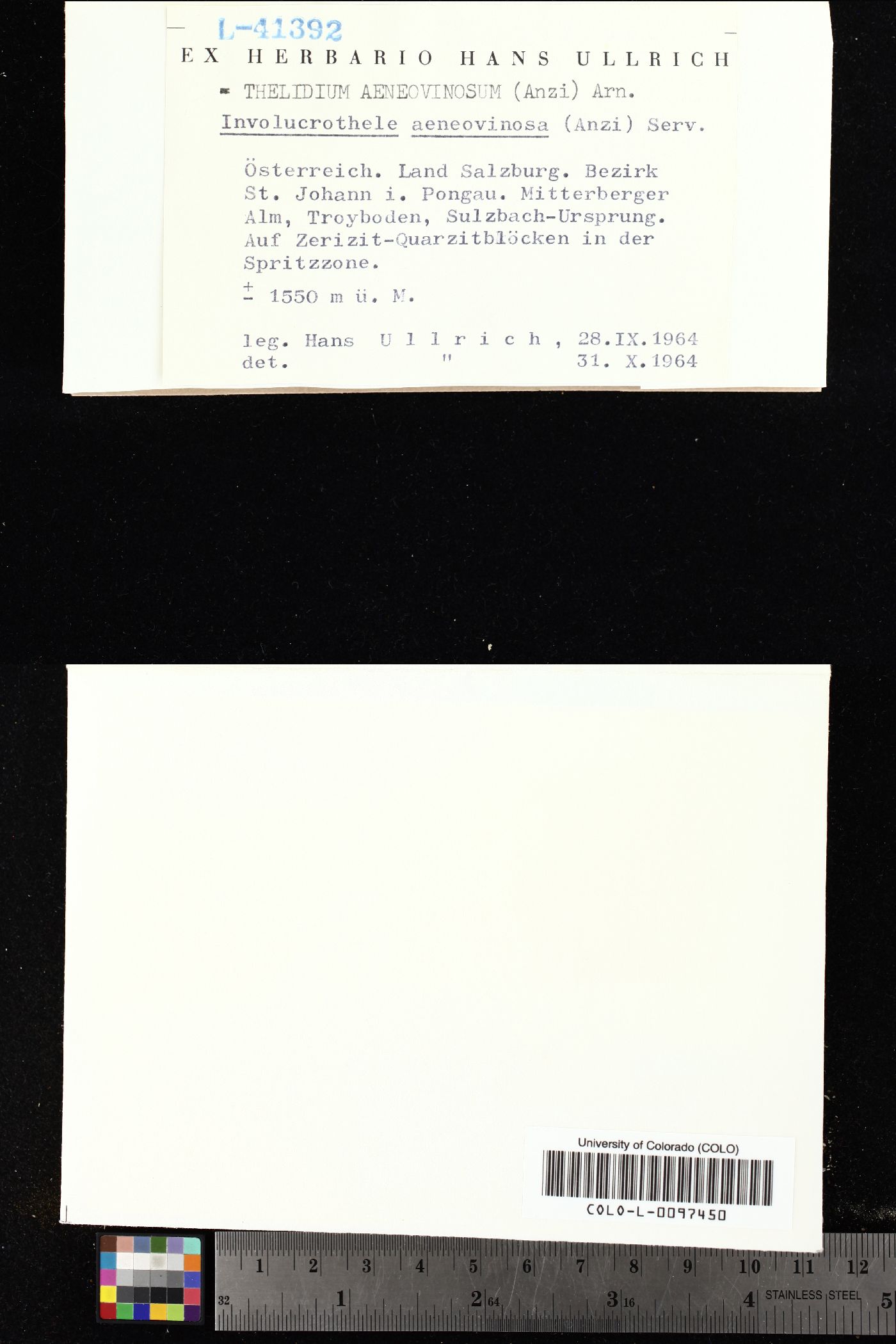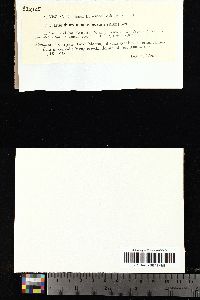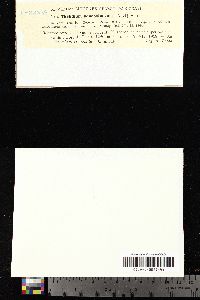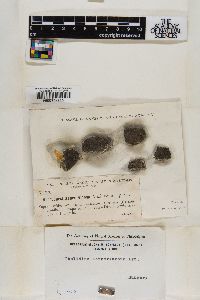
Consortium of Lichen Herbaria
- building a Global Consortium of Bryophytes and Lichens as keystones of cryptobiotic communities -
- Home
- Search
- Images
- Species Checklists
- US States: O-Z >
- US National Parks
- Central America
- South America
- US National Parks
- Southern Subpolar Region
|
|
|
|
Family: Verrucariaceae
|
Life habit: lichenized (mutualistic with algal photobionts) thallus: crustose (crustaceous) episubstratal unspecified thallus: cracked, fissured, fractured, rimose [th] upper surface: grey(ish) | brown(ish) (if pale: fawn, tan; if mid: cinnamon) | brown(ish) black | black(ish) brown | grey(ish) brown [th marginal and upper surface] specific structures: absent ascomata: absent | present ascoma: perithecial, perithecioid hymenial ascoma [mm]: (min) 0.3 (low) 0.4 (high) 0.7 (max) 0.74 ascoma: immersed, innate | subsessile, subimmersed, adnate, semi-immersed, emergent [ascm, if apoth] margin surface; [if perith] periostiolar area, ostiole, involucrellum: grey(ish) | brown(ish) (if pale: fawn, tan; if mid: cinnamon) | brown(ish) black [ascm, if apoth] margin excipular photobionts: absent [ascm, if apoth] subhymenial layers, hypothecium; [if perith] basal excipulum: brown(ish) (if pale: fawn, tan; if mid: cinnamon) | blue(ish) black [ascm] paraphyses/-oids: absent asci: fissitunicate bitunicate [asc] tholus: thickened [asc] tholus amyloidity (iodine reaction): absent ascospores: (median) 8.0 [asp] shape: ellipsoidal [asp] length [µm]: (min) 25.0 (low) 30.0(median) 34.1 (high) 38.0 (max) 49.0 [asp] width [µm]: (min) 10.0 (low) 13.0(median) 14.7 (high) 16.5 (max) 21.0 [asp] septa: present [asp] septa: transversely septate [asp] transversal septa: (median) 1.0 (max) 3.0 [asp] pigmentation: hyaline, colourless [asp] perispore, epispore: not apparent secondary metabolites: absent primary photobiont: present secondary photobionts (eg in cephalodia): absent primary photobiont: chlorophytaceous trebouxiaceous, chlorococcoid. substrate: rock siliceous, siliciferous, acidic | rock, stones, pebbles unspecified. |
Powered by Symbiota

















